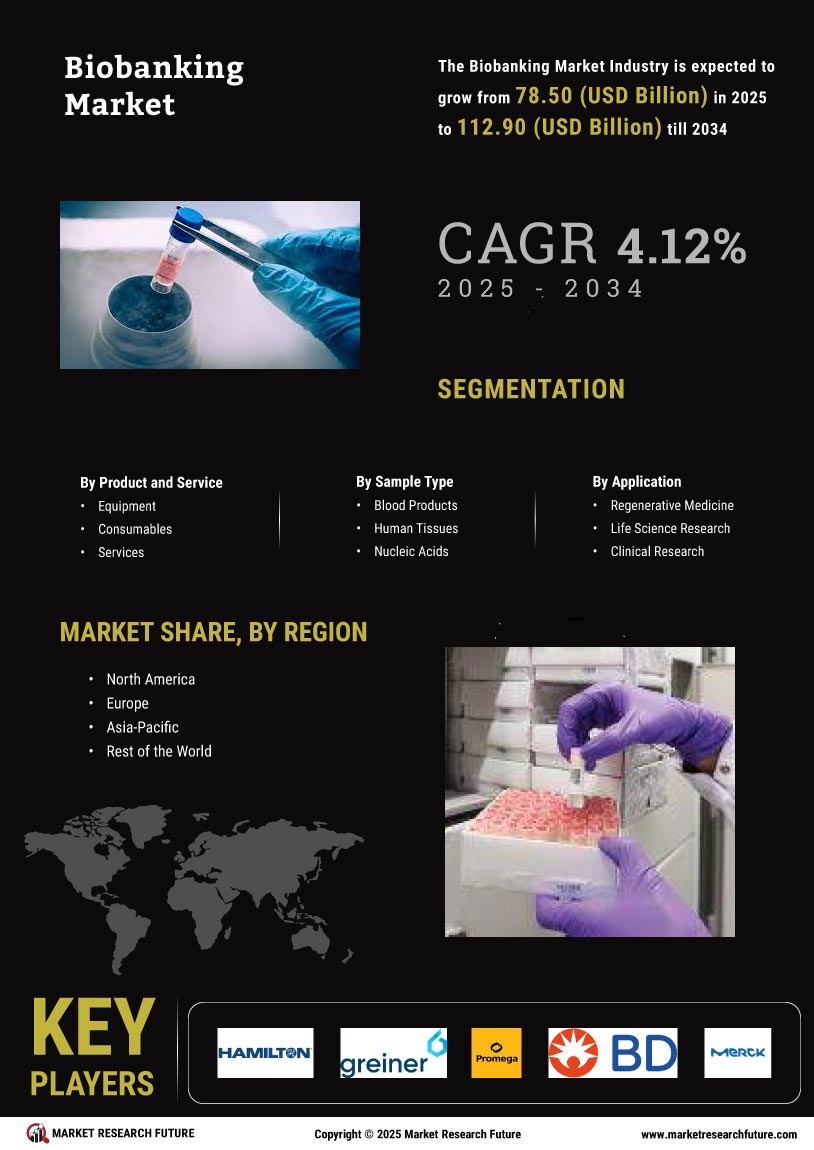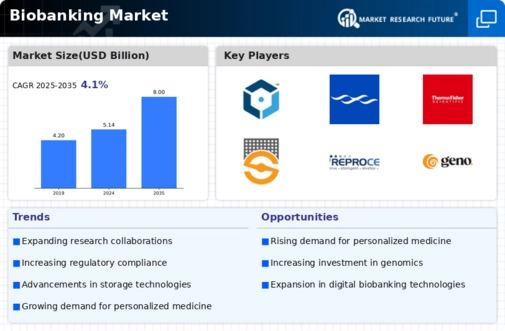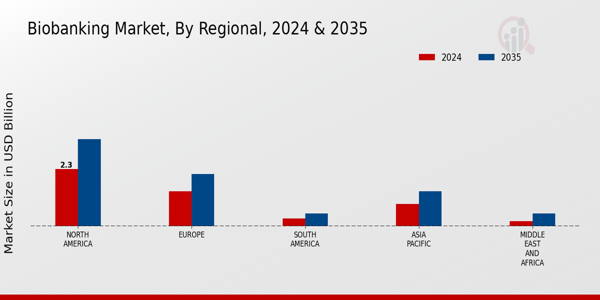Market Growth Projections
The Global Biobanking Market Industry is projected to experience substantial growth, with estimates indicating a market value of 5.14 USD Billion in 2024 and a potential increase to 8 USD Billion by 2035. This growth trajectory suggests a compound annual growth rate of 4.1% from 2025 to 2035. Factors contributing to this expansion include increasing demand for personalized medicine, advancements in technology, and growing investment in research and development. As the market evolves, it is likely to attract further interest from stakeholders across various sectors, including healthcare, pharmaceuticals, and biotechnology.
Regulatory Support and Standardization
Regulatory support and standardization are pivotal in shaping the Global Biobanking Market Industry. Governments are establishing frameworks to ensure ethical practices in biobanking, which enhances public trust and encourages participation. Standardization of sample collection, processing, and storage protocols is essential for maintaining data integrity and reproducibility in research. As regulatory bodies continue to refine guidelines, biobanks are better positioned to meet the demands of researchers and healthcare providers. This regulatory environment is likely to contribute to the market's growth, with projections indicating a rise to 5.14 USD Billion in 2024.
Rising Awareness of Biobanking Benefits
Rising awareness of the benefits of biobanking is driving participation and investment in the Global Biobanking Market Industry. Educational initiatives aimed at healthcare professionals and the public are highlighting the critical role biobanks play in advancing medical research and improving patient care. Increased understanding of how biobanks contribute to disease prevention, diagnosis, and treatment is likely to enhance public willingness to donate biological samples. This heightened awareness is expected to support the market's growth, with projections indicating a rise to 5.14 USD Billion in 2024 and further growth towards 8 USD Billion by 2035.
Technological Advancements in Biobanking
Technological advancements are transforming the Global Biobanking Market Industry, enabling more efficient sample management and data analysis. Innovations such as automated sample processing, advanced biorepositories, and sophisticated data analytics tools are enhancing the operational capabilities of biobanks. These technologies facilitate the integration of large datasets, allowing for more comprehensive research outcomes. As a result, biobanks can better support personalized medicine initiatives and large-scale epidemiological studies. The market's growth trajectory, with an expected value of 8 USD Billion by 2035, is indicative of the significant impact that technology has on biobanking practices.
Increasing Demand for Personalized Medicine
The Global Biobanking Market Industry is witnessing a surge in demand for personalized medicine, which relies heavily on biobanks for genetic and biological samples. This trend is driven by advancements in genomics and biotechnology, enabling tailored treatments for various diseases. For instance, biobanks facilitate the identification of genetic markers associated with specific conditions, thereby enhancing the efficacy of therapies. As the market evolves, the value is projected to reach 5.14 USD Billion in 2024, with expectations of expanding to 8 USD Billion by 2035, reflecting a compound annual growth rate of 4.1% from 2025 to 2035.
Growing Investment in Research and Development
Investment in research and development within the Global Biobanking Market Industry is on the rise, as governments and private entities recognize the importance of biobanks in advancing medical research. Funding initiatives are increasingly directed towards biobanking infrastructure, which supports the collection, storage, and analysis of biological samples. This investment not only enhances the capabilities of biobanks but also fosters collaboration between academic institutions and industry stakeholders. The anticipated growth in the market, reaching 8 USD Billion by 2035, underscores the critical role that R&D plays in driving innovation and improving healthcare outcomes.




















